Alec Go
LLM Cascade with Multi-Objective Optimal Consideration
Oct 10, 2024

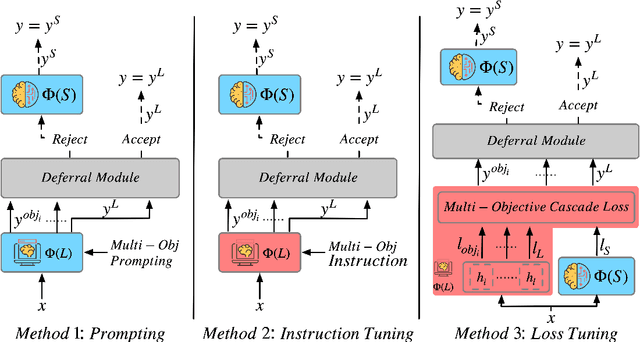
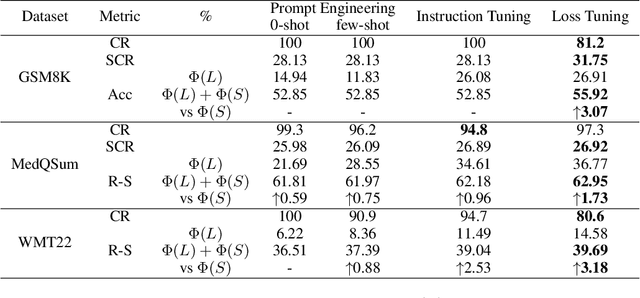
Abstract:Large Language Models (LLMs) have demonstrated exceptional capabilities in understanding and generating natural language. However, their high deployment costs often pose a barrier to practical applications, especially. Cascading local and server models offers a promising solution to this challenge. While existing studies on LLM cascades have primarily focused on the performance-cost trade-off, real-world scenarios often involve more complex requirements. This paper introduces a novel LLM Cascade strategy with Multi-Objective Optimization, enabling LLM cascades to consider additional objectives (e.g., privacy) and better align with the specific demands of real-world applications while maintaining their original cascading abilities. Extensive experiments on three benchmarks validate the effectiveness and superiority of our approach.
Cascade-Aware Training of Language Models
May 29, 2024



Abstract:Reducing serving cost and latency is a fundamental concern for the deployment of language models (LMs) in business applications. To address this, cascades of LMs offer an effective solution that conditionally employ smaller models for simpler queries. Cascaded systems are typically built with independently trained models, neglecting the advantages of considering inference-time interactions of the cascaded LMs during training. In this paper, we present cascade-aware training(CAT), an approach to optimizing the overall quality-cost performance tradeoff of a cascade of LMs. We achieve inference-time benefits by training the small LM with awareness of its place in a cascade and downstream capabilities. We demonstrate the value of the proposed method with over 60 LM tasks of the SuperGLUE, WMT22, and FLAN2021 datasets.
What Do You See? Enhancing Zero-Shot Image Classification with Multimodal Large Language Models
May 24, 2024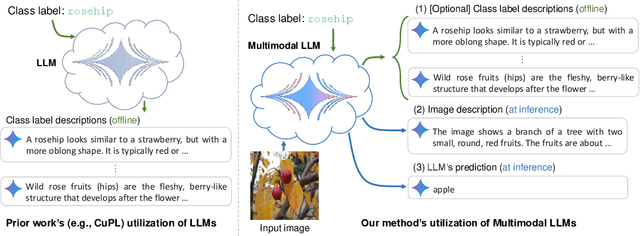
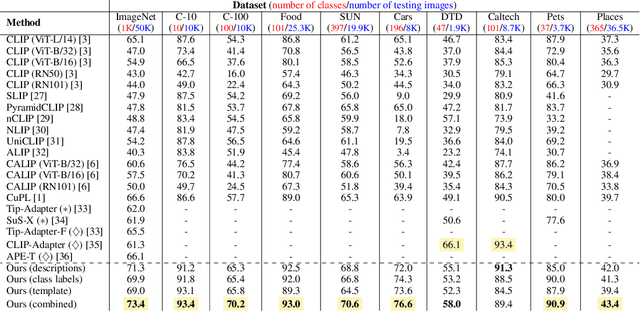
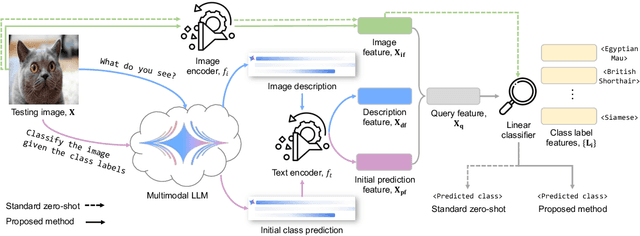

Abstract:Large language models (LLMs) has been effectively used for many computer vision tasks, including image classification. In this paper, we present a simple yet effective approach for zero-shot image classification using multimodal LLMs. By employing multimodal LLMs, we generate comprehensive textual representations from input images. These textual representations are then utilized to generate fixed-dimensional features in a cross-modal embedding space. Subsequently, these features are fused together to perform zero-shot classification using a linear classifier. Our method does not require prompt engineering for each dataset; instead, we use a single, straightforward, set of prompts across all datasets. We evaluated our method on several datasets, and our results demonstrate its remarkable effectiveness, surpassing benchmark accuracy on multiple datasets. On average over ten benchmarks, our method achieved an accuracy gain of 4.1 percentage points, with an increase of 6.8 percentage points on the ImageNet dataset, compared to prior methods. Our findings highlight the potential of multimodal LLMs to enhance computer vision tasks such as zero-shot image classification, offering a significant improvement over traditional methods.
Multi-path Neural Networks for On-device Multi-domain Visual Classification
Oct 10, 2020
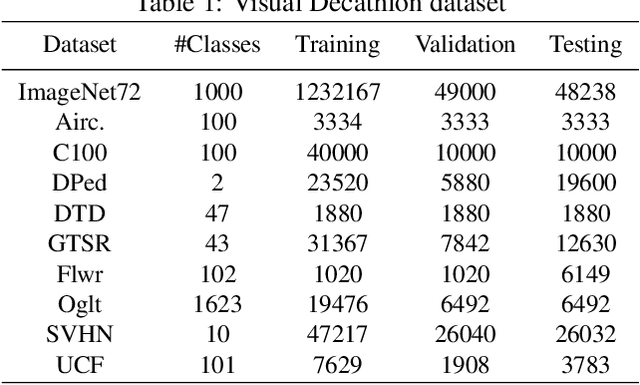
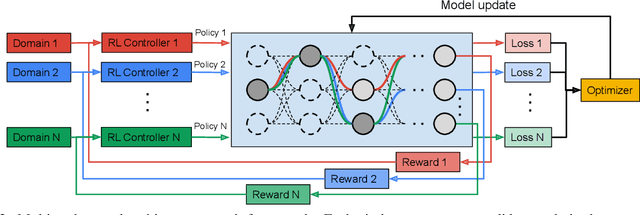

Abstract:Learning multiple domains/tasks with a single model is important for improving data efficiency and lowering inference cost for numerous vision tasks, especially on resource-constrained mobile devices. However, hand-crafting a multi-domain/task model can be both tedious and challenging. This paper proposes a novel approach to automatically learn a multi-path network for multi-domain visual classification on mobile devices. The proposed multi-path network is learned from neural architecture search by applying one reinforcement learning controller for each domain to select the best path in the super-network created from a MobileNetV3-like search space. An adaptive balanced domain prioritization algorithm is proposed to balance optimizing the joint model on multiple domains simultaneously. The determined multi-path model selectively shares parameters across domains in shared nodes while keeping domain-specific parameters within non-shared nodes in individual domain paths. This approach effectively reduces the total number of parameters and FLOPS, encouraging positive knowledge transfer while mitigating negative interference across domains. Extensive evaluations on the Visual Decathlon dataset demonstrate that the proposed multi-path model achieves state-of-the-art performance in terms of accuracy, model size, and FLOPS against other approaches using MobileNetV3-like architectures. Furthermore, the proposed method improves average accuracy over learning single-domain models individually, and reduces the total number of parameters and FLOPS by 78% and 32% respectively, compared to the approach that simply bundles single-domain models for multi-domain learning.
NetAdapt: Platform-Aware Neural Network Adaptation for Mobile Applications
Sep 28, 2018



Abstract:This work proposes an algorithm, called NetAdapt, that automatically adapts a pre-trained deep neural network to a mobile platform given a resource budget. While many existing algorithms simplify networks based on the number of MACs or weights, optimizing those indirect metrics may not necessarily reduce the direct metrics, such as latency and energy consumption. To solve this problem, NetAdapt incorporates direct metrics into its adaptation algorithm. These direct metrics are evaluated using empirical measurements, so that detailed knowledge of the platform and toolchain is not required. NetAdapt automatically and progressively simplifies a pre-trained network until the resource budget is met while maximizing the accuracy. Experiment results show that NetAdapt achieves better accuracy versus latency trade-offs on both mobile CPU and mobile GPU, compared with the state-of-the-art automated network simplification algorithms. For image classification on the ImageNet dataset, NetAdapt achieves up to a 1.7$\times$ speedup in measured inference latency with equal or higher accuracy on MobileNets (V1&V2).
 Add to Chrome
Add to Chrome Add to Firefox
Add to Firefox Add to Edge
Add to Edge